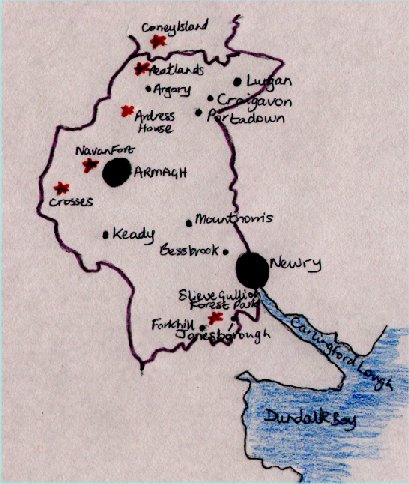|
| Armagh
Armagh is one of the oldest cities in Ireland. It dates back to the time of St. Patrick himself, who founded it in 455, and the beginning of Christianity in Ireland. There are two cathedrals, both called St. Patricks, one Catholic and one Protestant. The Roman #catholic one is neo-gothic with two spires and is visually striking. The Protestant one is older and dates from medieval times. Brian Boru, The King of Ireland who defeated the vikings in 1014, is laid to rest here. There is also an 11th century high Cross. Armagh county museum The museum is housed in a georgian building in Armagh's oval, tree-lined Mall. It has a lot of exhibits on local history. St. Patrick's Trian This is a heritage centre relating the history of the city. It also has a fantasy centre for children based on the "Land of Lilliput" by Jonathan Swift. Observatory Grounds This is where Ireland's only planetarium is based. There are also views over the city. Navan Fort This ancient earthwork is situated to the west of Armagh. In folklore and legend Navan was the spiritual capitol of ancient Ulster. This site may have been used as long ago as 4,000 years, but was most used about 100 BC, when there was a huge timber building 40m (130ft)across built over a cairn. At some stage it was burnt down and covered in soil. Evidence shows that this was done in some ceremony by the inhabitants themselves. Below the fort is a centre explaining the history of the site. Lough Neagh Lough Neagh was formed, so legend has it, when the giant Finn MacCool picked up a piece of turf and threw it into the Irish Sea. It is 400sq km (153 sq miles) and is the largest lake in the British Isles. The lake is famous for eels which grow in it, and salmon and trout are found in it and the rivers that flow from it. There is a Lough Neagh discovery Centre on Oxford Island which is a headland to the south.
|
